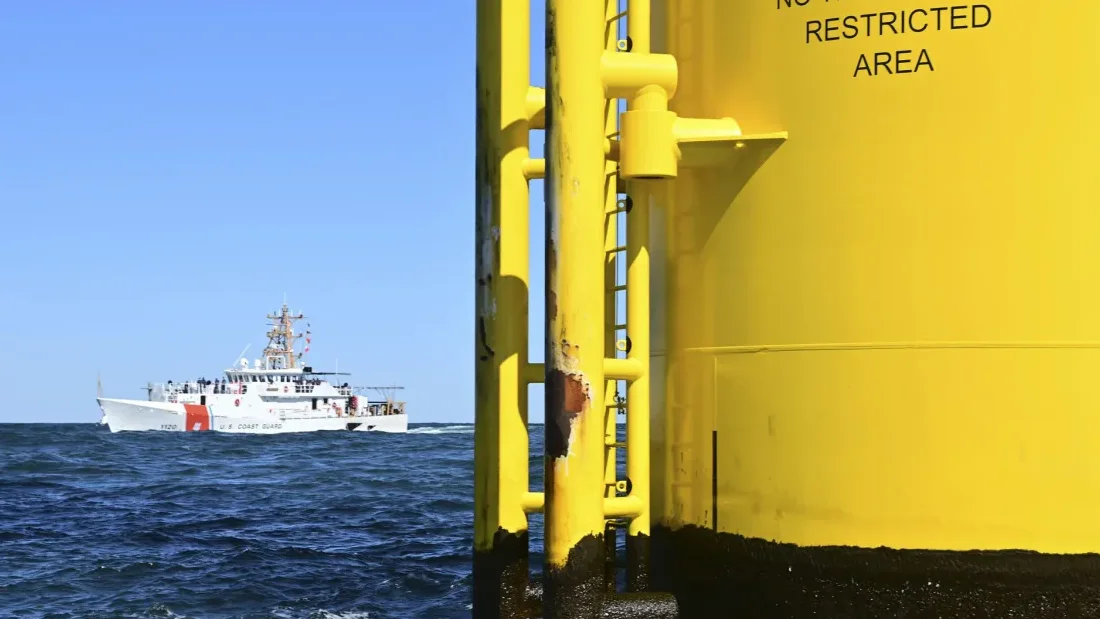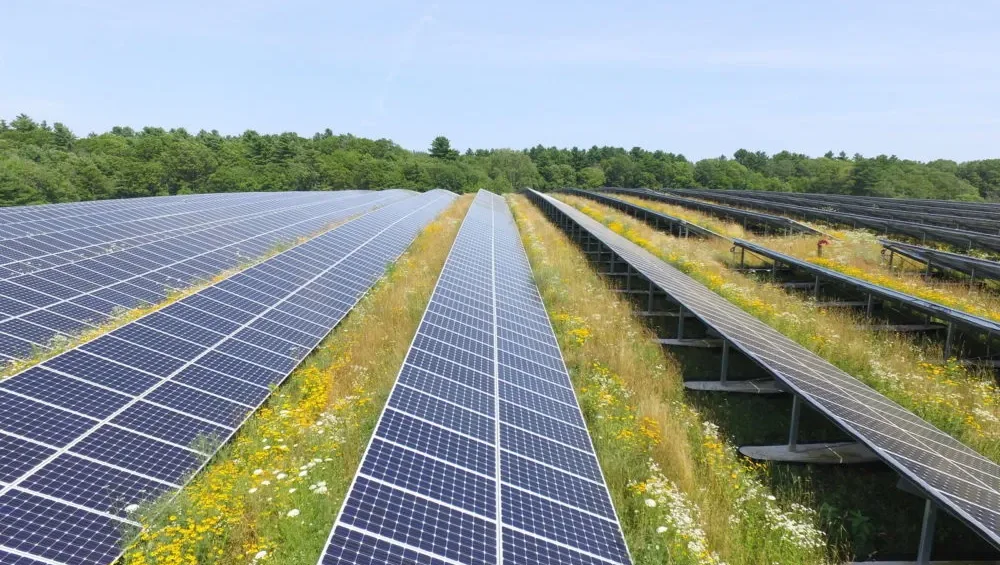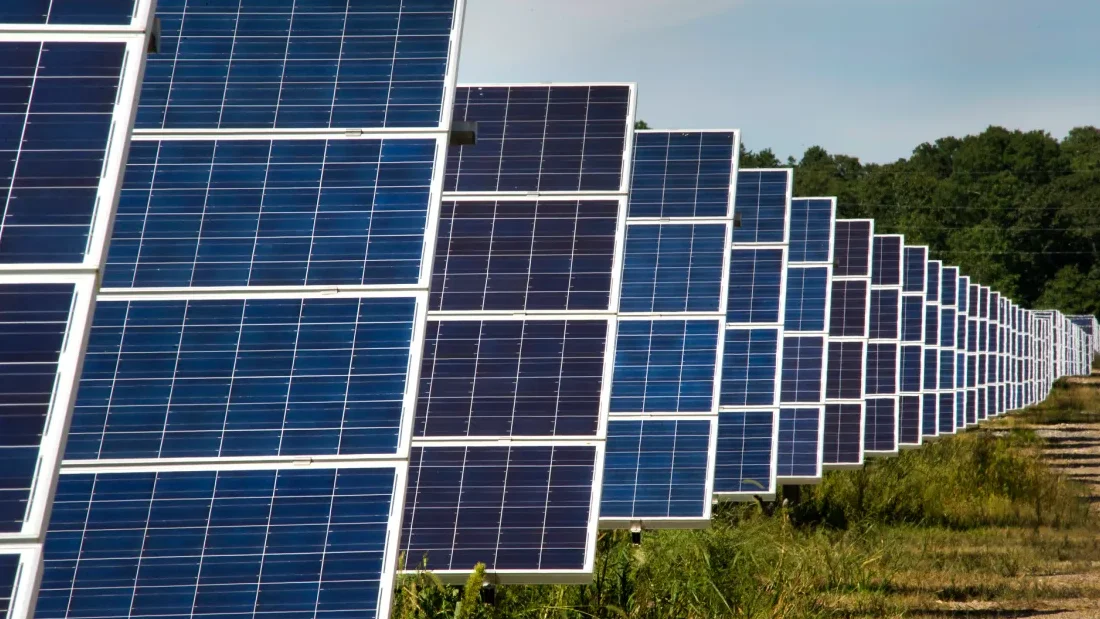
WIND: Dominion Energy showcases its use of environmentally friendly bubble curtains and vibrations to set monopiles as it moves forward with construction of a $9.8 billion offshore wind farm near Virginia. (Virginia Mercury)
ELECTRIC VEHICLES:
SOLAR:
UTILITIES: Clean energy advocates tell North Carolina regulators they should push Duke Energy to build more renewables and dial back its plans for new gas plants to meet an anticipated spike in power demand. (WFAE)
OIL & GAS:
PIPELINES:
GRID:
COMMENTARY:

WIND: With 21 of its planned 62 wind turbines completely installed, Vineyard Wind claims to now be the largest operating wind project in the country, pushing 136 MW to the grid. (electrek)
SOLAR:
RENEWABLE POWER:
GRID:
FOSSIL FUELS:
CLEAN TECH: For Boston’s clean tech hub dream to become reality, observers say it needs a “flagship” firm to attract workers and innovative ideas — but could that kickstarter be GE Vernova? (Boston Globe)
BIOENERGY: A proposed class action lawsuit has been filed in Massachusetts against a home heating oil dealer, which allegedly claimed to be selling them biodiesel when they weren’t. (Law360)
AFFORDABILITY: In a rural Maine county, residents subject to recently rising Versant Power rates discuss their affordability concerns. (The County)

SOLAR: Louisiana regulators approve a sleeved power purchase agreement to purchase power from non-utility sources for a coalition of 26 companies, including some of the state’s largest industrial giants, that have grown frustrated with the lack of renewables available from utilities. (Louisiana Illuminator)
ALSO:
ELECTRIC VEHICLES:
CLEAN ENERGY: Columbus, Georgia, business leaders say they’re building out the area’s higher education systems and freeing up land in hopes of taking part in the clean energy manufacturing boom that’s seen $32 billion invested in the state since 2021. (Columbus Ledger-Enquirer)
OIL & GAS:
HYDRO: A federal loan program provides $16.6 million for construction of the third of six planned hydroelectric plants in Kentucky, while a grant will fund solar power at a farm. (Kentucky Lantern)
GRID: A Virginia county supervisor proposes requiring new data centers to build on-site power to limit the use of eminent domain and construction of new transmission lines. (Loudoun Times-Mirror)
EMISSIONS: Researchers find plumes of toxic gas at the fenceline of some chemical plants in Louisiana’s “Cancer Alley” to be more than 1,000 times higher than what the U.S. EPA deems “an acceptable risk.” (Inside Climate News)
UTILITIES:
COAL: Businesses owned by West Virginia Gov. Jim Justice reach a settlement with a Virginia bank over roughly $300 million in outstanding loans, but now face the prospect of the forced sale of a coal company to satisfy different debts. (Cardinal News, WV Metro News)
COMMENTARY: A college student interviews climate activist Bill McKibben about the campaign to push the Tennessee Valley Authority away from building new natural gas-fired power plants toward solar power. (Tennessean)

Along with new tax breaks for families and businesses in return for investing in clean and more efficient energy, the federal government is for the first time offering support to schools and other nonprofits that make those investments.
“Direct support” payments from the Internal Revenue Service will pay back school districts, churches and other nonprofit organizations for part of what they spend on energy renovations that cut their energy use and replace fossil fuels.
For schools the program represents an opportunity to make energy upgrades that many have had to skimp on, according to Nathan Ugoretz, secretary-treasurer of the Wisconsin Education Association Council.
As state school funding falls behind the rising costs public school districts face, “funding for maintenance and improvements have been put on the chopping block,” Ugoretz said Thursday. School districts across Wisconsin have held referendum votes to raise property taxes to support ongoing expenses.
“This leaves no resources for overhauling outdated electrical systems or investments to cut energy costs,” Ugoretz said.
Ugoretz spoke at Forest Edge Elementary School, a Fitchburg school that has been singled out for its strides in improving energy efficiency. In 2021, the school, after operating for just one year, was recognized as the first Net Zero Energy school in Wisconsin — producing and returning to the power grid as much energy as it used.
The BlueGreen Alliance, an advocacy group that combines the interests of the labor and environmental movements, chose the school Thursday for a presentation on how clean energy and energy efficiency tax credits under the 2022 Inflation Reduction Act are available to more than just taxpayers, whether individuals or businesses.
Direct IRS support that passes those tax credits on to nonprofits will help accelerate the spread of green technology to more users, participants in Thursday’s event said.
“That is a really, really big deal — not only because we get to model for our students what a clean energy economy looks like, but because utility costs for schools are one of the biggest demands on school budgets,” said Kristina Costa, deputy assistant to President Joe Biden for clean energy innovation and implementation. “And when energy costs go up, that leaves fewer resources available for everything else that students need to do.”
Cutting those costs by boosting energy efficiency “frees up those precious dollars to improve our schools and in other ways to enrich our kids’ education,” Costa added.
Spurred by the Inflation Reduction Act, businesses have invested $1.7 billion on clean power projects in Wisconsin through May 2024, according to the White House.
“This is a win, win, win,” said Rep. Mark Pocan (D-Town of Vermont) — for improving education resources, for labor and “more professional job development to have good wages and benefits. Pocan praised the Biden administration for taking “the high road,” adding, “it’s a win for the environment because ultimately we’re addressing climate change through addressing the rising cost of energy.”
Forest Edge school was built well before the Inflation Reduction Act was signed into law, but as Wisconsin’s first net-zero energy school, “it’s an example of what’s possible for schools across the state,” state Carly Eaton, Wisconsin policy manager for BlueGreen Alliance.
From the start the Oregon School District facility was developed to be as energy efficient and clean-energy focused as possible, school district officials said.
A total of 1,704 solar panels line the flat rooftops of the building, providing enough electricity that the district is able to sell some of it back to the power grid, according to Andy Weiland, Oregon School District business manager. Walls of glass maximize natural light in the building, while the panes are specially treated to darken automatically in sunlight to prevent the building interior from heating up.
Geothermal energy, which draws heat from deep below the earth’s surface, and heat pump technology warm the school — and also keep it cool when the weather outside is warm.
“For the most part we don’t have to use any fossil fuels at all,” Weiland said as he gave a tour of the building Thursday.
Had the district been able to use the Inflation Reduction Act’s direct support program when it was building the school, the savings, Weiland speculated, “would have been several million dollars.”
Beyond the savings that the act promises for people and organizations that use its incentives to upgrade their energy systems, the legislation has also been championed for provisions that require contractors to pay employees prevailing local wages on projects that qualify for the full values of tax credits. It also requires projects to employ participants in licensed apprenticeship programs.
The two requirements help stabilize the construction workforce, said Emily Pritzkow, executive director of the Wisconsin Building Trades Council, which represents about 40,000 Wisconsin members in several construction unions.
“By utilizing competitive labor standards, including an area’s standard wages, benefits and training opportunities, we are ensuring the economic impact of these projects stays in our local community for generations to come,” Pritzkow said.

SOLAR: Korean solar company Qcells expands its deal with a developer to provide 2 GW of modules from its Georgia factory for community solar projects by 2027 — the largest community solar partnership in U.S. history. (Korea Herald, news release)
ALSO:
OIL & GAS:
WIND: Dominion Energy begins installing turbine foundations as it continues building its 176-turbine offshore wind farm near Virginia. (WHRO)
RENEWABLES: A California firm agrees to purchase stakes in a 250 MW solar farm, a 226 MW wind farm and a 350 MW wind farm, all located in Texas. (Renewables Now)
HYDROGEN: The oil and gas industry’s lawsuit against the U.S. EPA questioning the process of developing clean hydrogen as a fuel for long-haul trucks grinds against efforts by Exxon Mobil and Chevron to champion the new technology. (Houston Chronicle)
COAL: A federal watchdog releases a report finding an agency’s process for distributing funding to states and tribes to clean up old coal mines is plagued by problems that have resulted in delays, poor tracking and confusion over the process. (E&E News)
NUCLEAR: West Virginia U.S. Sen. Shelley Moore Capito calls on state officials to ensure they’ve prepared sites for the construction of small modular nuclear reactors after her legislation heads to President Biden for his signature. (WV News)
BUILDINGS: A North Carolina developer constructs 11 new homes built to federal Zero Energy Ready Home standards that are priced for first-time homebuyers. (WSOC)
ELECTRIC VEHICLES: A Texas school district will purchase 15 electric buses with $6.1 million in federal funding. (KXAS)
GRID:
CLIMATE:
COMMENTARY: Louisiana should engage communities around ports and leverage federal funding to reduce toxic emissions, environmental injustice and the potential for lawsuits, writes an activist. (The Advocate)

SOLAR: Supporters say establishing a community solar program in Michigan would help accomplish a range of climate, justice and economic development goals, though legislation still faces utility opposition. (Planet Detroit)
WIND:
CLIMATE: After arriving at an Iowa news station full of optimism, a meteorologist’s climate-focused reports soon met backlash and threats that led him to quit after two years. (New York Times)
ELECTRIC VEHICLES: Detroit’s three automakers should focus on selling gas-powered trucks to fund research and development that could bring down the cost of electric vehicles, a banking analyst says. (Detroit News)
RENEWABLES: An Iowa conservative clean energy group works to promote renewable energy as public sentiment and NIMBYism challenge new projects. (Cedar Rapids Gazette)
EMISSIONS: A national biofuels trade group joins oil companies and refineries in challenging new federal tailpipe emissions rules that could threaten both sectors. (Iowa Capital Dispatch)
UTILITIES: Michigan’s attorney general pushes back on DTE Energy’s attempt to require customers without smart meters to report their outages in order to receive bill credits, as opposed to receiving them automatically. (WDIV)
GRID:
COMMENTARY:

WIND: An energy company opens a 184 MW wind project in Mississippi, bucking the Southeast’s resistance to onshore wind power to supply energy to Amazon for regional data centers and logistics hubs. (Canary Media)
GRID:
UTILITIES: Federal regulators collect public comment as they reconsider whether to approve a real-time market consisting of Dominion Energy, Duke Energy, the Southern Company and other Southeast power companies. (Utility Dive)
SOLAR:
RENEWABLES: A Virginia county approves stricter rules around wind and solar projects after public outcry against a 2022 wind farm proposal. (Galax Gazette, subscription)
PIPELINES: As the Mountain Valley Pipeline finally enters service, advocates and opponents shift their attention to its proposed spur into North Carolina, which Duke Energy says could supply its proposed natural gas-fired plant buildout. (WVTF, West Virginia Public Broadcasting)
COAL: Federal data shows four of West Virginia’s five coal-fired power plants produced less power in 2023 than any year since 2001. (West Virginia Public Broadcasting)
ELECTRIC VEHICLES: Hyundai announces the first vehicle it will produce this fall at its planned Georgia factory is its top-selling electric vehicle, the IONIQ 5. (Georgia Current)
NUCLEAR: West Virginia nuclear energy advocates hope a recently passed bill in the U.S. Senate will jumpstart the development of small nuclear reactors in the state. (WBOY)
OVERSIGHT: An Louisiana energy regulator announces he won’t seek reelection and will step down at the end of the year. (Louisiana Illuminator)
POLITICS: A new study finds large majorities of Louisianans support carbon capture, solar farms and offshore oil and gas drilling, regardless of their political affiliations. (Louisiana Illuminator)
COMMENTARY: A researcher finds Duke Energy overestimated the reliability of fossil fuels and the cost of renewables to justify its proposal to delay closing coal plants and build new gas plants in North Carolina, writes a staffer at a Southeast clean energy group. (Southern Alliance for Clean Energy)

CLEAN ENERGY: The world’s largest ever climate survey finds 54% of Americans want a quick transition from fossil fuels to clean energy, among the smallest majorities among counties polled. (The Guardian)
ALSO:
NUCLEAR: Congress overwhelmingly passes a bill to boost the development and building of advanced nuclear projects, marking a rare bipartisan energy win. (E&E News)
WIND: An energy company opens a 184 MW wind project in Mississippi, bucking the Southeast’s resistance to onshore wind power to supply energy to Amazon for regional data centers and logistics hubs. (Canary Media)
SOLAR:
ELECTRIC VEHICLES:
GRID:
HYDROPOWER: The Biden administration acknowledges that federally operated hydroelectric dams on the Columbia River have harmed salmon and the tribal nations reliant on them, bolstering efforts to decommission the facilities. (Associated Press)
PUBLIC LANDS: Wyoming and Utah file a lawsuit seeking to block the federal Bureau of Land Management’s new public land rule that puts conservation on a par with energy development, saying it threatens their resource-based economies. (WyoFile)

Have you had a conversation with ChatGPT, experimented with Google’s email-answering generator, or used an AI-enhanced search on Bing or Facebook? All those AI-enabled activities take a lot more data processing than a regular internet search or scroll. And more data processing means more data centers — and more electricity to power them. Analysts predict these facilities, which house servers that send and store tons of data, could account for as much as 9% of U.S. energy demand by 2030.
Virginia has earned the nickname of “Data Center Alley,” as it’s home to servers that see about 70% of global internet traffic, according to the Wall Street Journal. But as more devices connect to the internet and as AI drives up data demand, data center developers are looking for new places to locate these facilities.
With its cooler climate, abundant water, and relatively mild weather, the Midwest may serve that niche, the Energy News Network reports. And clean energy advocates say data centers could help juice renewable energy development; Microsoft, for example, has promised to build renewables in Wisconsin to help make up for the power its planned data centers will use. Former coal plants and industrial facilities also make good homes for data centers since they’re already connected to the power grid.
But data center proliferation across Virginia and the Southeast is also provides a cautionary tale for clean energy. Utilities across the region have announced plans to build new gas plants and keep coal plants open longer, often citing data centers’ energy needs as part of their reasoning.
Read more about the promise and perils of a Midwest data center boom at the Energy News Network.
💸 Where climate funding goes: More than three quarters of the Inflation Reduction Act’s $34 billion of announced investments have gone to congressional districts represented by Republicans who voted against it, an analysis finds. (CNN)
⚛️ Small nuclear fires up: The U.S. Energy Department announces $900 million for small nuclear reactor development, which along with a bipartisan federal bill to reduce fees and speed permitting could boost the industry. (E&E News, The Hill)
🚘 Benefits for EV buyers: U.S. electric vehicle buyers have received more than $1 billion in point-of-sale rebates since the Treasury Department launched the instant incentives in January, discounting an estimated quarter of the 600,000 EVs sold so far this year. (E&E News)
🌊 Whatever floats your solar panel: Covering around 10% of the world’s lakes and reservoirs with floating solar panels could generate enough electricity to power the United Kingdom four times over, and could be used to cover all power use in some small countries, scientists find. (Grist)
⏳ What’s the holdup? Supply chain and interconnection delays are stalling large renewable energy projects across the Midwest, despite new efforts in Minnesota, Illinois and Michigan to speed up permitting. (Inside Climate News)
🏠 Use ‘em or lose ‘em: Inflation Reduction Act funding for home energy rebates will likely remain mostly unspent until after the November election; Trump allies have indicated he would revamp the program and jeopardize the funding if he is elected. (E&E News)
🛣️ Lining up grid wins: An organization pushing to build transmission lines along highways recently scored a legislative win in Minnesota, and now looks to expand the policy to other states. (Canary Media)
🔋 FERC fills up: The U.S. Senate confirms three nominees to the Federal Energy Regulatory Commission, filling the five-member board as it prepares to guide the nation’s grid buildout. (E&E News)
🛢️ Ten years later: Federal regulators approve the long-delayed Mountain Valley Pipeline to enter service after a decade of regulatory, legal and on-the-ground battles. (Roanoke Times)

NUCLEAR: The U.S. Energy Department announces $900 million for small nuclear reactor development, with most of the funding going to teams planning to build a small reactor plant and multi-reactor project. (E&E News)
ALSO:
PIPELINES:
RENEWABLES:
STORAGE: Stanford University researchers say they’ve found a novel way to store electric energy in liquid fuels, a potential way to retain intermittent renewable energy for when it’s needed. (The Independent)
GRID: Federal energy regulators want four grid operators to prove their rules for transmission owners to pay for and profit from network upgrade rules are fair. (Utility Dive)
EMISSIONS:
ELECTRIFICATION: A California startup develops software aimed at helping people cost-effectively pair home electrification and rooftop solar. (Canary Media)
COAL: A federal rule takes effect requiring stricter limits for silica dust that’s contributed to a spike in black lung disease. (WLKY)